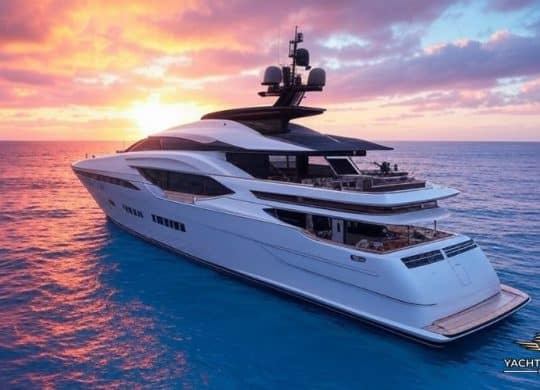History and Evolution of Explorer Yachts
People in the late 20th century used yachts for leisure and sports. There was no concept of using yachts for long-distance travel. Explorer yachts emerged in the late 20th century due to an increasing interest of people in exploring remote regions. More people wanted to cruise autonomously, so that’s why they focused on the robust construction of yachts to withstand harsh weather conditions in the sea.
First Explorer Yachts
Cruising enthusiasts started converting commercial vessels into explorer yachts. Most people converted fishing trawlers and supply ships to expedition yachts for personal travel and commercial purposes. Some businesspeople who wanted to earn money ensured their yachts had luxury accommodations and amenities to meet the needs of their customers.
Evolution Over Time
Modern explorer yachts have excellent features, such as:
- Ice-class hulls to withstand icy waters
- Advanced navigation systems for real-time information about the yacht’s position
- Long-range fuel tanks to cope with the problem of refueling frequently
So, these features were introduced in yachts to ensure their durability, autonomy, and safety. After all, sea/ocean adventurists and enthusiasts wanted to make their yachts suitable for long-distance and thrilling voyages.
Current Trends

Individuals and businesses are making consistent efforts to enhance all aspects and features of explorer yachts. For example, there is a massive tendency toward making the yacht eco-friendlier by incorporating features like:
- Solar panels
- Hybrid propulsion systems
- Waste management systems
Solar panels in yachts are important because they allow owners to reduce fuel consumption costs. Now, owners can install solar panels to power the yacht’s electrical systems, including lighting and appliances. Some yachts have powerful solar systems, allowing them to run propulsion systems. So, they want to make explorer yachts environmentally friendly and sustainable.
Features of an Explorer Yacht
Although explorer yachts have numerous features, some of the most popular ones that make them suitable for adventure voyages are:
- Build strength
- System redundancy
- Reasonable fuel consumption
- Advanced navigation
- Storage and waste management
Build Strength

What is an explorer yacht without build strength? Well, it is not even an explorer yacht if it is not strong enough for long-distance travel. A good explorer yacht with excellent build strength uses marine-grade steel, aluminum, and advanced composites in the construction.
Backup System
An explorer yacht is nothing without a backup system – this system ensures the yacht is operational for a long time. The backup system runs when the main system fails or if there are any problems with propulsion, steering, and power generation.
Reasonable Fuel Consumption

They are called explorer yachts because they can embark on long, uninterrupted journeys. But what is the use of such a yacht if it is consuming too much fuel? Nothing, right? Well, solar panels and other advanced systems have allowed owners of yachts to reduce fuel consumption, but solar systems are not that much sophisticated to run the engine.
That’s why they introduced larger fuel tanks to ensure the yacht does not need to refuel frequently. Research shows that the fuel capacities of yachts vary from 1,000 liters to 1 million liters. For instance, a 50-foot yacht has 500 to 1,000 gallons of fuel capacity, and a 100-foot yacht has around 5000 gallons.
The average fuel capacity of an explorer yacht is 10,000 to 50,000 gallons of fuel. So, this large fuel tank or capacity allows these yachts to undertake long-distance journeys without hassle. Some explorer yachts can travel for one month and cruise at 11.5 knots for more than 5,000 nautical miles. Some yachts can even reach a fast speed of 14 knots with a range of 3,000 nautical miles at 10 knots.
Advanced Navigation
A modern explorer yacht has advanced navigation systems, including:
- GPS/AIS for accurate geolocation and time information to avoid collisions
- Radar system for range, angle, and velocity of objects for an easy journey in poor visibility conditions
- Sonar system for detecting objects on or under the water
- Advanced Night Sight and Ranging systems for safe passage in poorly charted waters with remote inlets and unlit passageways
The combination of these navigation systems allows yachts to travel safely through different waters, such as ice-filled waters. So, let’s say you are venturing into the Arctic Circle with ice-filled waters, but without these systems in the yacht, you can’t detect icebergs or avoid potential hazards.
Storage and Waste Management

Sometimes, people call the explorer yacht an “autonomous” yacht because it can voyage for at least 40 days away from fresh supplies. So, explorer yachts usually have large storage solutions with state-of-the-art operating systems. They also have rubbish management systems. Some models even have powder glass, crushed metal, and macerated perishable waste systems.
Other Features
In addition to the features discussed, people also prefer the following features for luxury and convenience:
- A large tender garage to accommodate smaller boats
- A beach club
- Spa-gym complex
- Cigar lounge
- Pool
- Library
- Observation deck
- Heli Hanger
Final Words About Explorer Yacht
Explorer yachts are more than just a boat; they are a ticket to a world of adventure. Built tough and packed with the latest tech, these vessels are ready to take on the high seas. And the best part? They are doing it in a way that respects our planet. So, whether you are a seasoned sailor or a new sailor with dreams of the open ocean, an explorer yacht could be your passport to a whole new world of discovery.




